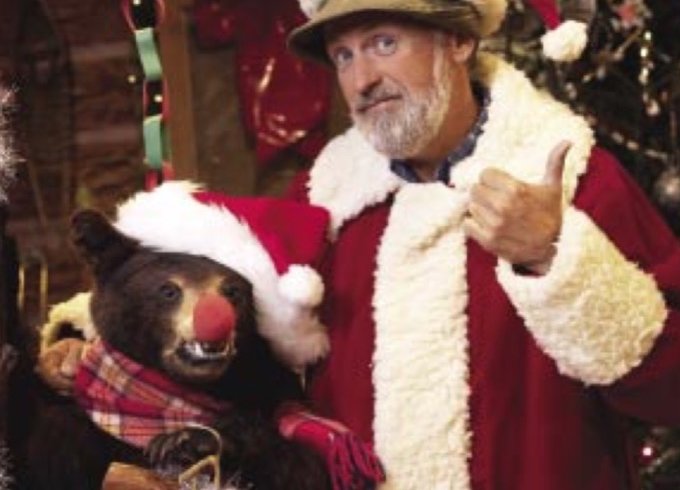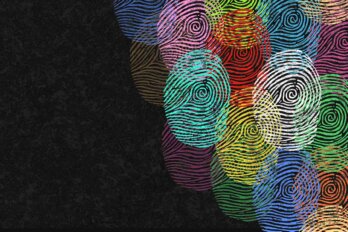Comedian Steve Smith remembers the autumn of 1989. At the time he had a couple of series under his belt and was determined to make it on Canadian television. Stuck for ideas and in need of work, he decided to a build a show around a rustic character he had performed a few times in his previous efforts. The result was The Red Green Show, a series set in the mythical Possum Lodge, which lampooned cable fishing shows and revelled in its rural roots. “It was supposed to be a summer job,” he says. “It was the narrowest comedy I’d ever done. I figured that a few people would like it very much and most of the people would not like it at all.”
The opposite turned out to be true.The Red Green Show immediately drew large ratings. Today it is in its fourteenth season and has a fan club that boasts hundreds of thousands of members who relish Red Green gags such as, “This is a belt sander, but don’t sand your belt with it unless you’re really into the celibacy thing,” and parodies such as his poetry reading “Now Is the Winter of Our Discount Tent.” There are Red Green books and in 2002 there was the Red Green movie Duct Tape Forever. The appeal is not limited to Canada. The Red Green Show can be found in syndication on 100 stations in the US. “To be honest,” says Smith, “I’m still a little surprised.”
He shouldn’t be.
While it is not surprising that a country whose national symbol is the beaver and whose one-dollar coin is called a loonie is known for producing comedians, many trendy cappuccino-swilling, Six Feet Under-watching, Quill & Quire-reading metropolitans would be shocked to learn that one of our most fertile comedic fields is not the arena of the urbane wit, but rather the rural everyman typified by Smith’s Red Green. For argument’s sake let’s term the phenomenon comedicus hickus supremus—the reign of the comic hick.
The Red Green Show is not the lone example of the dominance of country comedy. Last year’s sleeper hit, Corner Gas, follows the antics of the citizens of Dog River, a small town in Saskatchewan (population: 450). Airing on ctv, Corner Gas averaged 1.2 million viewers per episode and returned this season with eighteen new shows. It stars Saskatchewan-bred stand-up Brent Butt, 38, and is a throwback to the days of The Beachcombers. The cast, which includes veteran actor Eric Peterson, is solid and the show’s writing clever. One episode, for example, chronicles the town’s effort to attract tourists by constructing “the world’s biggest hoe.” “We strove for realism,” says Brent Haynes, director of programming for The Comedy Network and an executive in charge of Corner Gas. “If any character stood out as too much of a redneck, we changed them to make them as believable as possible.” Adds Butt: “I always go from the perspective that people are more the same than they are different.”
Meanwhile, another slice of Canuck pastoral pie, Showcase’s Trailer Park Boys, is a cult hit both in Canada and in the United States. Both cbc perennials This Hour Has 22 Minutes and Royal Canadian Air Farce have their share of recurring yokels. It’s enough to make even the most citified comedian trade in his or her beret for a straw hat.
Ironically, as the taste for country comedy heats up, Canada is becoming more and more municipal. According to the 2001 census, 79.4 percent of Canadians live in an urban area with a population of over 10,000. In fact, 51 percent of us live in one of our country’s four large centres: Ontario’s Golden Horseshoe, greater Montreal, the lower British Columbian mainland, and the Calgary-Edmonton corridor. Canadians cities grew by 7.6 percent between 1991 and 2001. Its rural regions recorded no growth whatsoever.
So why the recent surge of rural comedy?
To best understand the trend, one must recognize that it is not a new occurrence but rather the reappearance of a time-honoured Canadian tradition, one that occasionally lies dormant but always pushes its way up again. The concept of the simple country bumpkin who is too honest to deceive and therefore tells the truth with comic effect can be traced back to Juvenal and the Roman satirists. Stephen Leacock set the Canadian mould with his 1913 book Sunshine Sketches of a Little Town. His was a gentle but pointed picture of life in rural Ontario.
During the 1930s, the tenor of rural comedy became more skewed. In America, humourist Will Rogers tapped into Depression-era discontent by using pastoral irony to vent the frustrations of what he termed “the big normal majority.” In Canada, Art McGregor and Frank Deaville, a pair of hardware-store clerks from Calgary, echoed Rogers’s homespun wit and became the nation’s first radio comedy hit. In the early Thirties, they created the characters Woodhouse and Hawkins, two grassroots goofs who resided at the fictional Nitwit Court. Initially earning $5 per show, the duo went on to become stars on the cbc. It’s best to think of them as the prototype for Bob and Doug McKenzie, a couple of hosers who haplessly try to make their way through life. Woodhouse and Hawkins remained on the radio until after the Second World War, at which time the pair who created them went into advertising.
By the early Fifties, Canadian comedians such as Don Harron, Dave Broadfoot, and Michael Magee each created a rural bumpkin with which to assail the status quo. The most famous of these was Harron’s Charlie Farquharson, which he first introduced in 1952 as part of the satiric revue Spring Thaw. Charlie was a hayseed with a predilection for malapropisms. Dave Broadfoot’s rustic alter-egos were the Honourable Member for Kicking Horse Pass and Sergeant Renfrew, a Mountie who never gets his man. Magee’s rustic curmudgeon Fred C. Dobbs (taken from the movie The Treasure of the Sierra Madre) was the honourable member from Beamsville, Ontario.
All three comedians used their bucolic counterparts to bludgeon Canadian society, in particular the upper class. In American mythology, there is a sense that one has the right to voice disapproval and that the individual’s prerogative to disagree should trump the collective need for consensus. In Canada, between 1950 and 1980 at least, the opposite was true. Says Magee, “In a civilized country like France, they’d throw the bastards in jail. But here all we’re concerned with is keeping their names out of the paper.” So Magee and his fellow comedians employed a kind of satiric ventriloquism. The comic wrote the jokes, but the character took the heat. “I quickly learned,” recalls Magee, “that the old duffer could get away with saying things that would not be accepted from a young man.”
It was during the 1960s that two Canadians turned the Canuck affinity for all things backwoods into one of the most lucrative television shows of all time. Frank Peppiatt and John Aylesworth, two comedians who had their start on cbc television and then migrated south to Hollywood, decided to mix country music and comedy. They hired Don Harron to reprise Charlie Farquharson and strove to create “a real hick fest,” Aylesworth said of the show. “Plenty of clichés. We’d have a cornfield for corny jokes and a barbershop and a fishing pond.” The result was Hee Haw, one of the corniest shows ever created. It ran for twenty-four years and 585 episodes. When cbs, embarrassed by its redneck aesthetic, cancelled the show, Aylesworth and Peppiatt put it into syndication. They were only the second producers to try it (Lawrence Welk was the first). The move made them rich. “Put it this way,” Peppiatt later said, “we realized why the networks didn’t want anyone to get into syndication.”
In the 1980s, sctv cast members Dave Thomas and Rick Moranis followed in Hee Haw’s money-making footsteps by introducing the ultimate hosers, Bob and Doug McKenzie. With tag lines such as “Take off, eh!,” and skits such as “Beer Hunter,” the pair were intended as a screw-you to Canadian content. They were a North American sensation and the duo released an album (with a guest appearance by Rush’s Geddy Lee) and a feature film, Strange Brew, that combined beer and back bacon with the plot from Hamlet.
Today’s rural comedy has more in common with the good-natured rustics of Hee Haw and Bob and Doug than it does with the satire of Don Harron and Michael Magee. Canadian comics no longer require a satiric mask. cbc’s Monday Report star Rick Mercer, for instance, freely attacks politicians and power-brokers directly.
Instead, contemporary rural comedy allows Canadians to enjoy a pastoral ideal, one most of us have never experienced. The highest per-capita ratings for Corner Gas come not from small-town Canada but from Toronto. It is interesting to note that in British comedy, the country is almost always portrayed as a malignant dystopia. The hit bbc series The League of Gentlemen was set in the imaginary town of Royston Vasey, a hellish place rife with murder, madness, and sexual dysfunction.
In Canada, the picture is far rosier. Corner Gas is a gentle, reassuring comedy. There are no real villains; everyone is good by degrees. The comedy is warm and unassuming, a perfect reflection of Brent Butt’s stand-up. A sixteen-year veteran of the circuit, he is one of the most popular comedians in Canada. In 2000, he tried selling his pilot Bedtime with Brent Butt, about a couch potato who dreams he has his own talk show, but there was little interest. With Corner Gas he went back to his stand-up material, which revolves almost exclusively around his experiences growing up in the tiny village of Tisdale, Saskatchewan.
“That’s how I learned to do stand-up,” says Butt. “By hanging out in a coffee shop telling jokes and listening to jokes. There were a lot of skilled storytellers.”
The majority of city-dwelling Canadians would not believe that such friendly behaviour could exist in a large metropolitan area. Instead, the city is depicted as venal. The most popular cosmopolitan comedy on Canadian airwaves is Ken Finkleman’s The Newsroom, a series set in a Toronto TV news department. It is a twenty-first-century version of a seventeenth-century Restoration comedy. Led by the Machiavellian George Findlay, The Newsroom is populated by wits and fools, the former feeding on the latter. There is no kindness, only naïveté. Finkleman’s comic vision, like that of the Restoration playwrights, is one of a corrupt and hypocritical world desperately in need of unmasking. Andy of Mayberry it ain’t.
The continued success of Corner Gas and Red Green may spawn imitators but don’t look for the trend to continue unabated. Like the farming lifestyle it spoofs, the rural comedy boom is cyclical. It blooms and flourishes a while and then wilts. There is only so much good-natured rustic wisdom one can take. Steve Smith, for example, is moving on. He has a new series, Steve Smith Playhouse, now airing on Space, and he intends to call it quits on The Red Green Show after the 2005 season (which will be its fifteenth). By that time he will have created 300 episodes. “We are a content-heavy show, which means we have around ten ideas per show. That means by my calculation we’ve rejected 30,000 premises.”
Meanwhile, Corner Gas has the makings of a long-running hit. “There is a comfort level about it,” says Butt. “There are a million story ideas and the characters are archetypes—the cranky old man, sarcastic woman, dopey guy. The potential is there to last. It could go.”






